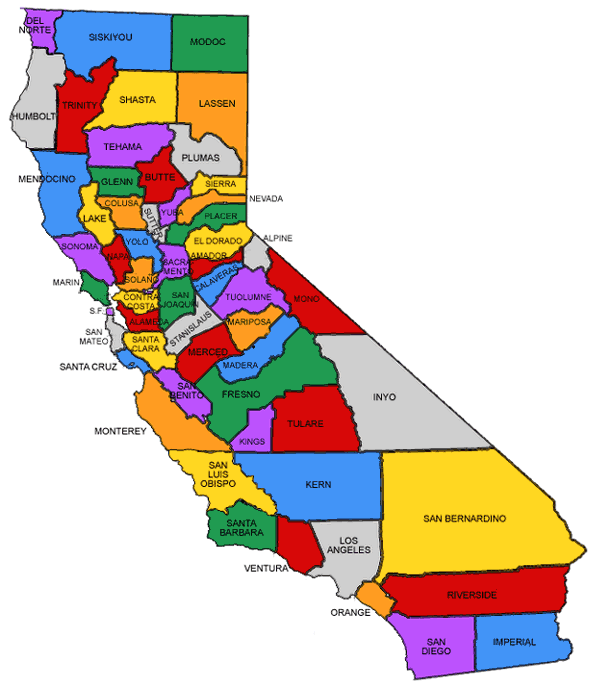
CARE Court (Photo: https://www.chhs.ca.gov/care-act/)
CARE Courts Expand To All 58 Counties Despite Program’s Mixed Results
Newsom claims program success
By Evan Symon, December 3, 2024 6:03 am
The Governor’s Office announced on Monday that the Community Assistance, Recovery and Empowerment (CARE) Court program has expanded to all 58 Counties in California, even though the program has had, so far, mixed results.
According to the state, the Community Assistance, Recovery and Empowerment (CARE) Court was put into place through the passage of SB 1338 to help establish a framework to get those with mental and substance abuse problems support and assistance, especially those with untreated conditions, before conservatorship and institutional care. Families, clinicians, first responders and others will also be able to refer individuals suffering from schizophrenia spectrum or psychotic disorders.
SB 1338 was signed into law in September by Governor Gavin Newsom, who noted at the time, “With overwhelming support from the Legislature and stakeholders across California, CARE Court will now become a reality in our state, offering hope and a new path forward for thousands of struggling Californians and empowering their loved ones to help. I thank our legislators and the broad coalition of partners who made this day possible and look forward to our work ahead together to implement this transformative program in communities across California.”
However, rollout of the program proved to be slow, launched in October 2023 with Orange, Riverside, San Diego, San Francisco, Stanislaus, Glenn, and Tuolumne counties, Los Angeles opening in December 2023, San Mateo in July 2024, and Kern in October 2024. Funding began with an initial $88 million, an additional $52 million set to be added with the new budget later this year. Plans are, under full implementation, to raise funding to $215 million by 2026.
Lawsuits also hampered the program for months. Disability Rights California, the Western Center on Law & Poverty, and the Public Interest Law Project filed a suit, Disability Rights California v. Newsom, challenging the Care Courts in the state Supreme Court in January 2023 over the involuntary nature of the courts. According to the filing, “The proposed solution is court orders that rob unhoused Californians of their autonomy to choose their own mental health treatment and housing and threatens their liberty. This ‘solution’ will not work and will deprive thousands of people of their constitutional rights.”
Despite this, the CARE courts moved on. In August, they had their first graduate. While there have been successes, it has also been shown that fewer people are entering the program – more of their petitions are being rejected, and more overall CARE court cases are being heard. In short, it hasn’t been a failure as the program has shown limited results, but neither has it been a success. Even after well over a year after starting up, only around 1,400 people have been connected to CARE courts.
Instead of a slow rollout, the state moved forward without seeing any sort of feasibility. Nonetheless, Governor Newsom announced on Monday that CARE courts were now set up in every county in the state.
“Finding treatment, housing, and support for Californians with the most serious mental illness has been a top priority of my administration and I’m proud to see early achievements from this innovative new model,” said Newsom in a statement. “With every county’s CARE Court program now up and running, I am eager to see even more successes for our most seriously ill Californians, and continued progress in our state’s behavioral health transformation for all Californians.”
Opponents of CARE courts noted that legal challenges still remain, and that CARE courts will need to have more solid numbers before more lawmakers come on board in support.
“CARE courts are a bit of a mess right now,” lawyer Brandon Gibbons told the Globe on Monday. “Granted, some people have been going through the courts and improving. But it’s hardly the money saver or advanced project like they have been claiming it is. They really need better figures, more successes, and perhaps crucial, give a plain as day success rate of the program. They aren’t giving round figures. Just give numbers on how many entered, how many passed, how many failed. They can’t even manage that.”
- Bill to Require Law Enforcement Disclosure if AI Was Used To Help Write Reports - August 7, 2025
- Gov. Newsom Files FOIA Request To ‘Expose True Cost’ Of L.A. Federal Troop Deployment for Anti-ICE Riots - August 6, 2025
- California Redistricting: How Newsom’s Plan Will Demolish Hard Fought GOP Gains - August 6, 2025




